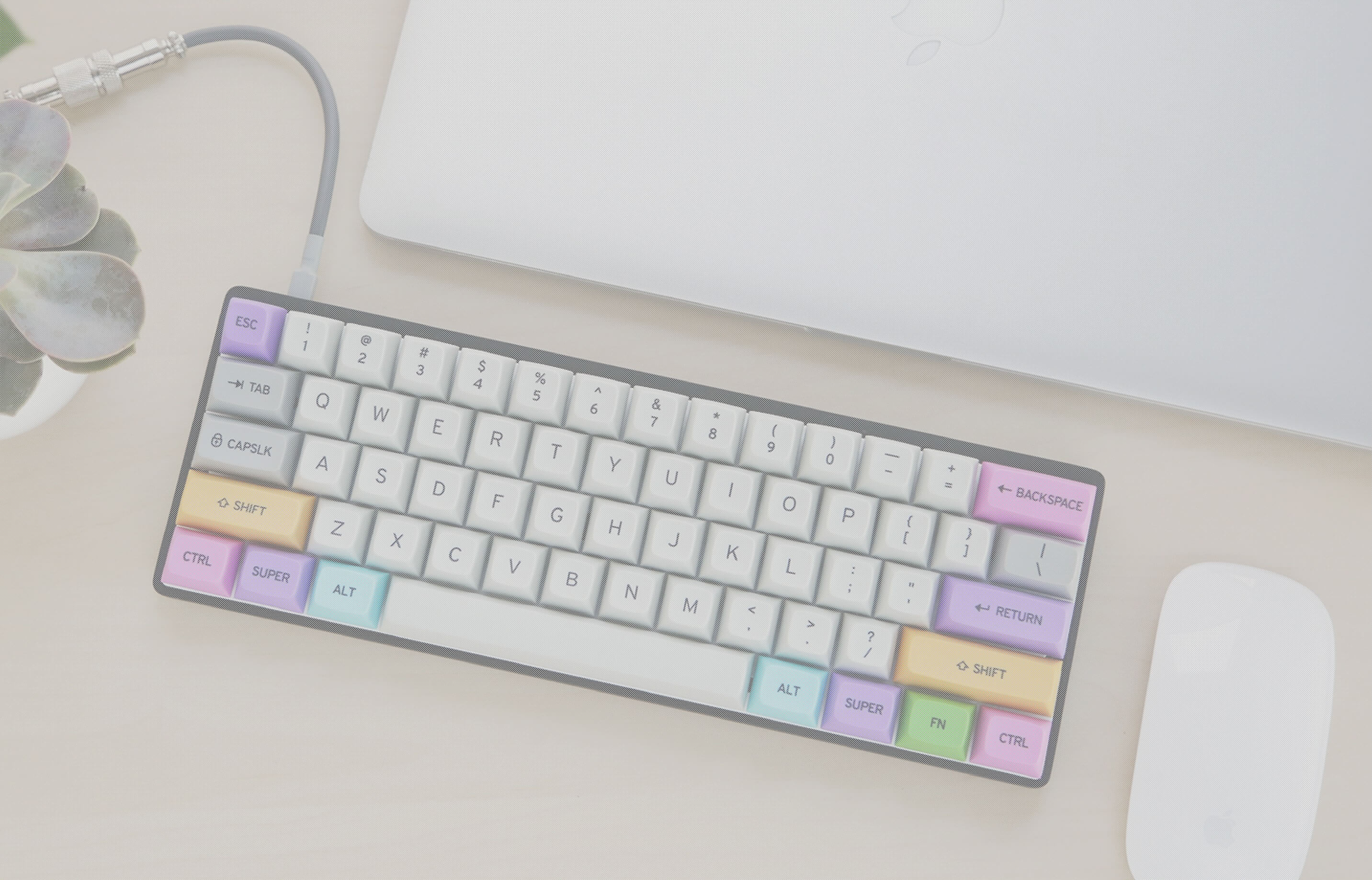In the world of mechanical keyboards, brand names like Corsair, Razer, HyperX, etc., take the bulk of the limelight. The majority of these brands claim to offer the best in terms of quality and functionality, but that's not always the case. While the popular gaming brands have pushed the awareness and adoption of mechanical keyboards into the mainstream, compromises on quality are almost always made in order to lower prices. When you compare your available options, you'll soon realize that outward design is the only differentiator. Choose your design, choose your switch---that's it.
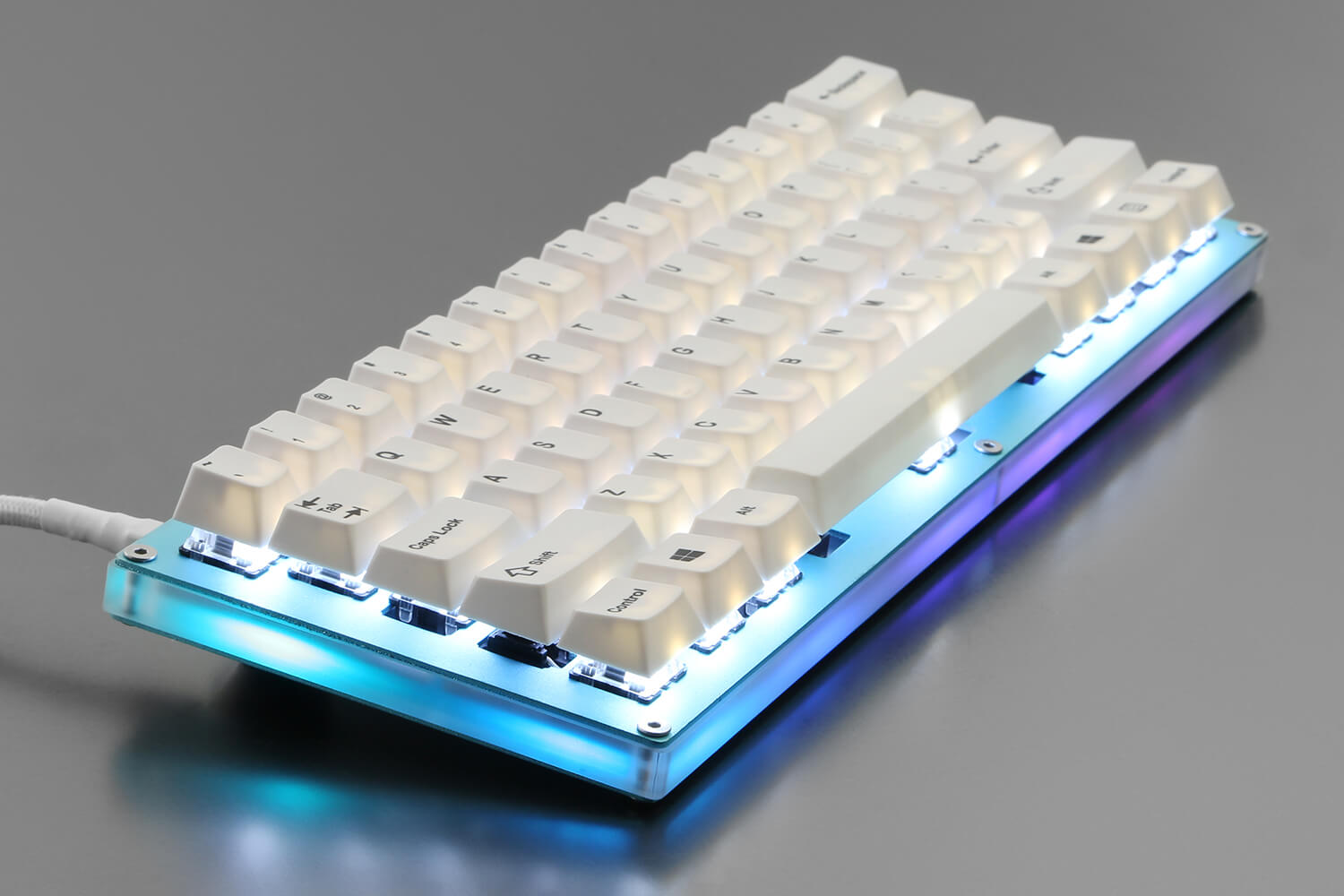
But what if I told you that every part of a keyboard can be customized. This goes far beyond the aesthetics of buying the latest keyset from Massdrop or swapping in a braided cable.
With pre-built boards you don't get to choose the size or the layout. If you want a programmable keyboard in a 60 percent format with dedicated arrow keys but it is only available without the programmability, then you will need to make compromises and choose the features that are most important to you. If you're not one for making compromises, it may be time to build your own.
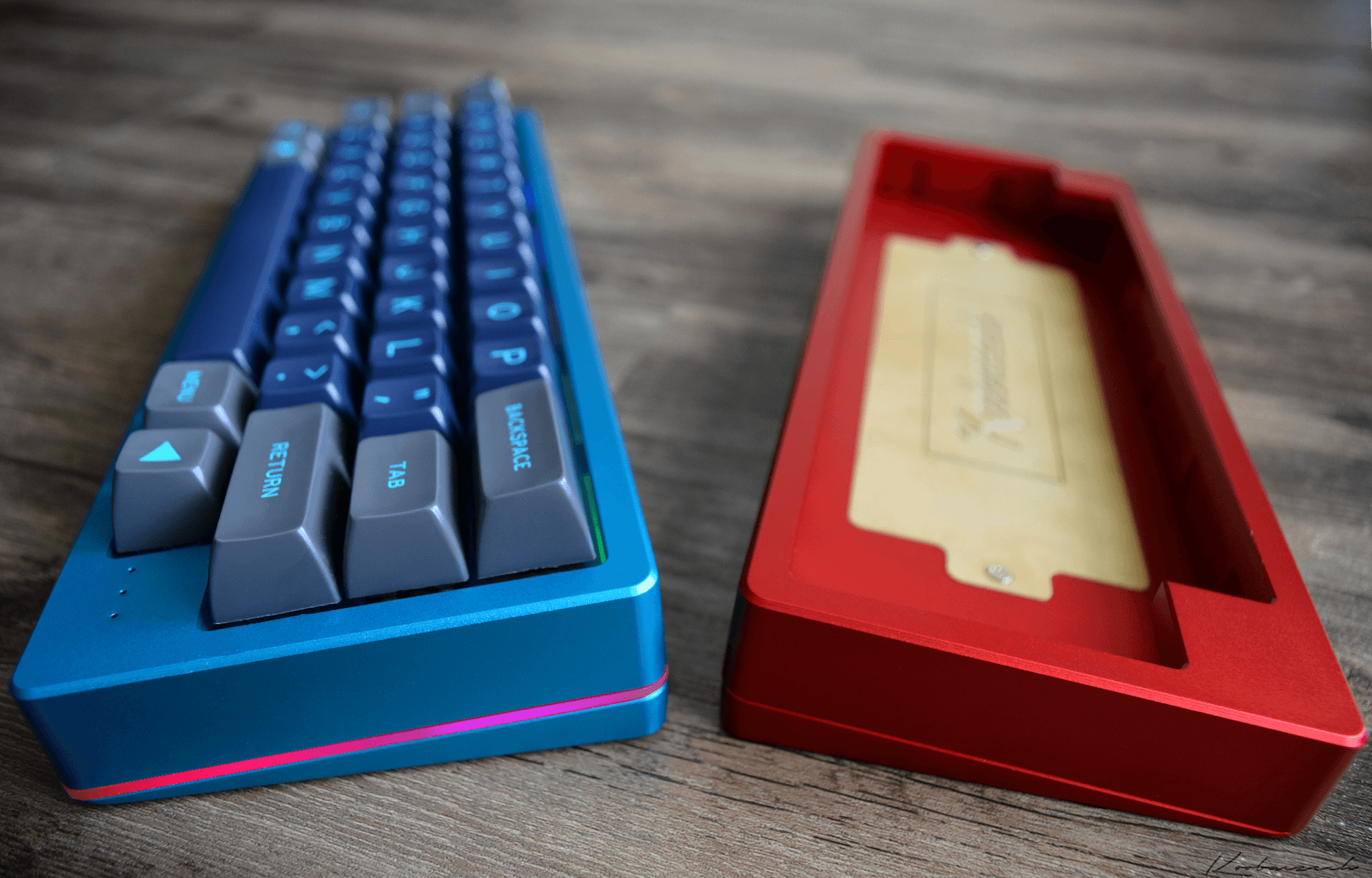
Image Credit: Geekhack
When you're starting any DIY project you need to know what parts you need to buy. The last thing you want is to sit down with your soldering iron only to realize your missing an important piece.
There are six components you'll need to put together a functioning keyboard along with a USB cable:
All of these parts have a wide range of options to personalize your keyboard and many options for one part can determine or limit your options for another.
Choosing the right places to buy your parts from can be pretty difficult if you've never built a keyboard before. Your first instinct might be to hop onto Amazon and start searching for parts. You can find some good options this way but it's much easier if you can get multiple parts from the same source.
There are a few different stores I like to buy my parts from. KBDfans has a huge selection of components and they carry more cases and PCBs than any retailer I've seen. It's entirely possible to get everything you'll need from them, but their keycap selection leaves much to be desired. 1UP Keyboards is another one stop shopping destination for mechanical keyboard parts. Their case selection isn't as robust as KBDfans but if you live in the US, you can save on shipping by ordering from them. If you're looking for basic keysets to get your board up and running, either of these stores will have you covered.
If, however, you are looking for something a bit more unique and with a wider range of compatibility, you'll need to look elsewhere. Massdrop is a great way to get more expensive and limited run keysets at significant savings if you're willing to wait for them to drop and ship. If you're not willing to wait and you're prepared to spend whatever it takes, Originative offers a wide variety of keysets from high quality brands like GMK and Signature Plastics.
Now, before you go spending money on anything and everything, we'll go into more detail for each part so you can see how it comes together.
Choosing Components for Your Mechanical Keyboard
Cases
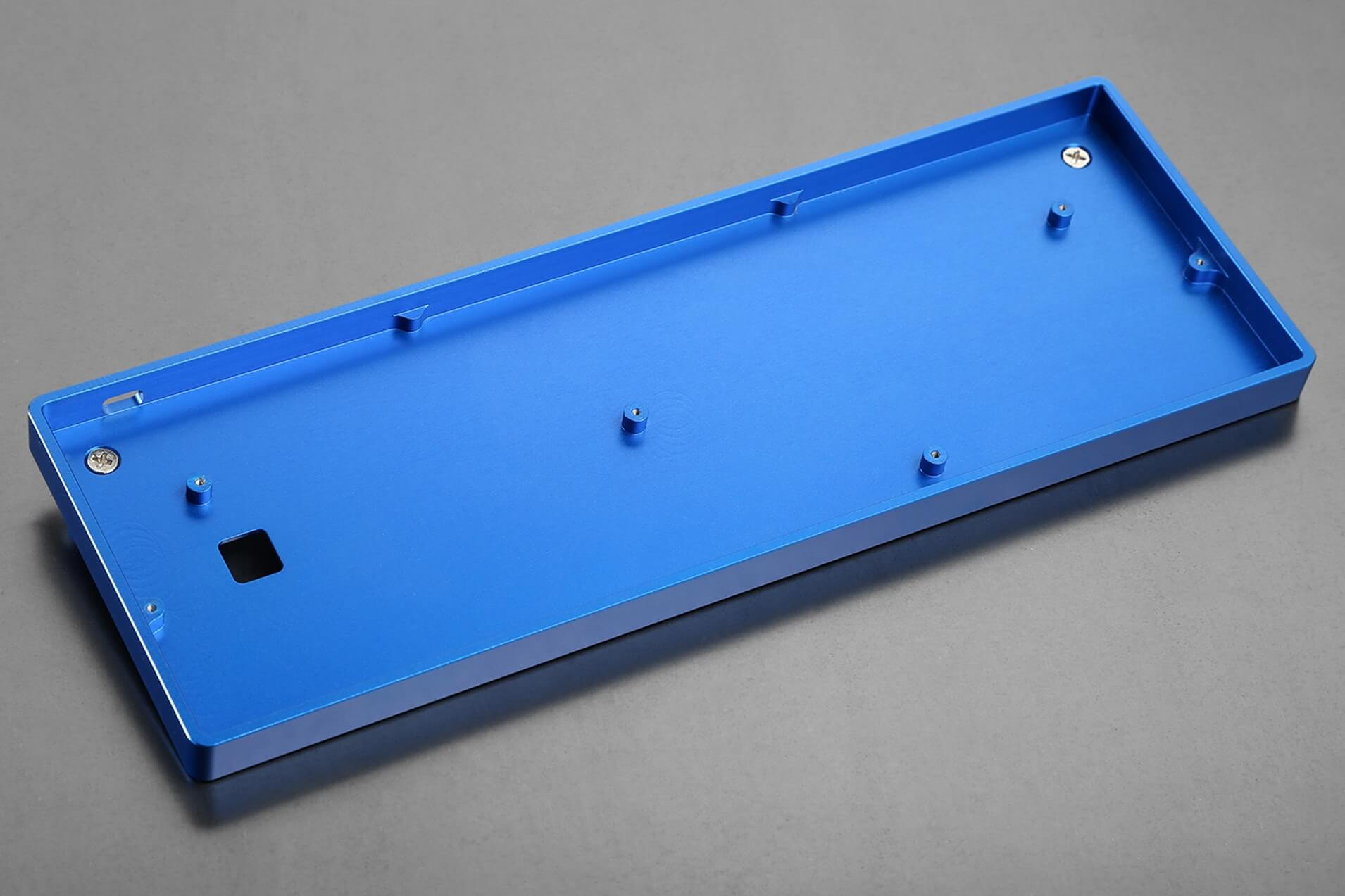
Before choosing your case, you need to decide what size of keyboard you want to build. The size you choose will narrow down your case options but each size or layout, whether it's 40 percent, 60 percent or full size, will have multiple cases to choose from. Once your have decided on the size of your keyboard, you need to decide on which material you want your case to be made from. This typically comes down to budget and doesn't impact the functionality of the keyboard. Cases are usually available in one of 4 different materials.
- Aluminum
- Plastic
- Wood
- Clear Acrylic
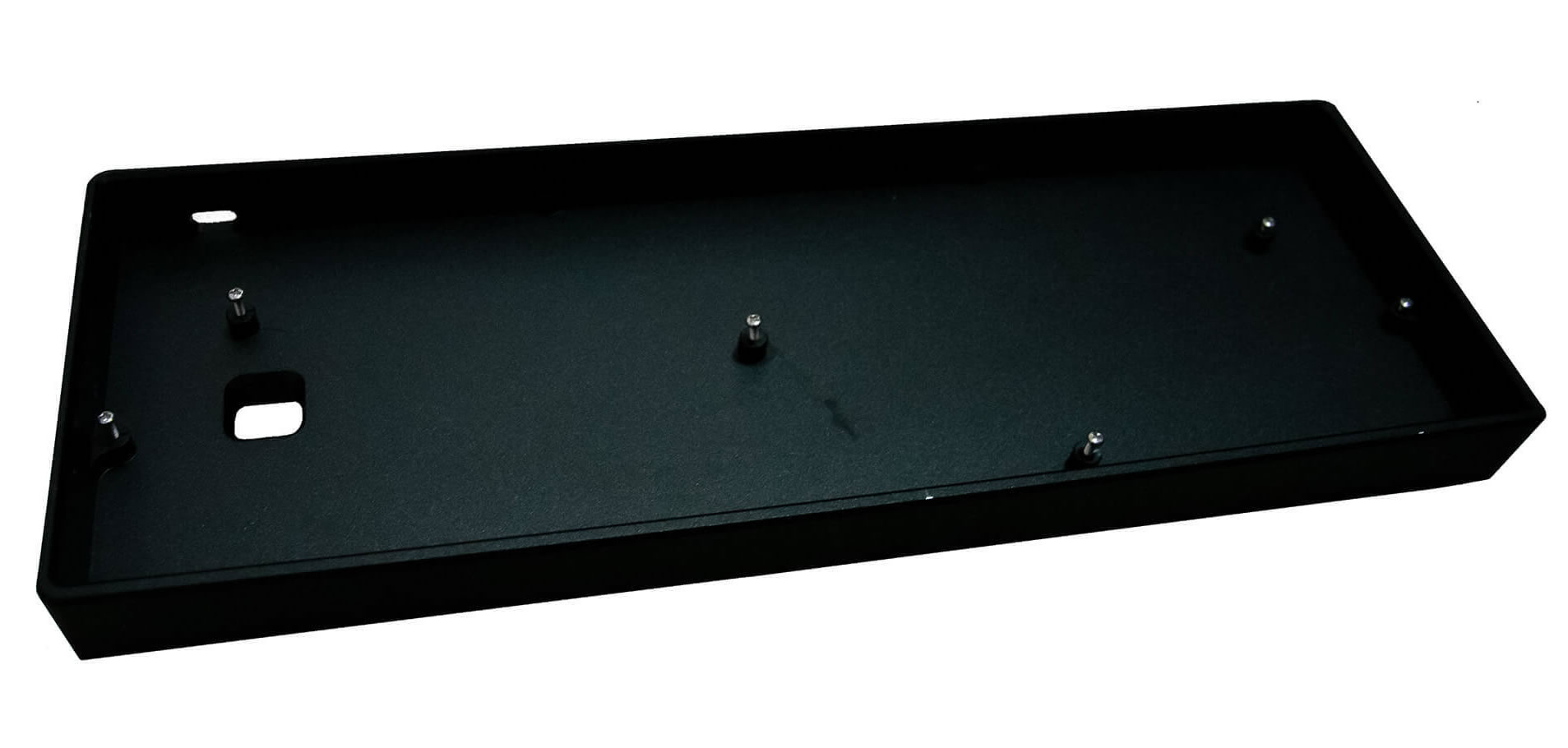
Aluminum is the most expensive option but offers the strongest platform for your keyboard. The added weight can help keep your keyboard in place during those heavy work or play sessions. It also provides a premium look and feel that you won't find in plastic cases. Other than cost, the main downside is the effect on acoustics. Typing on a keyboard with an aluminum case can be much louder and provide a more metallic and hollow sound. Some people prefer this, but it's something to bear in mind.
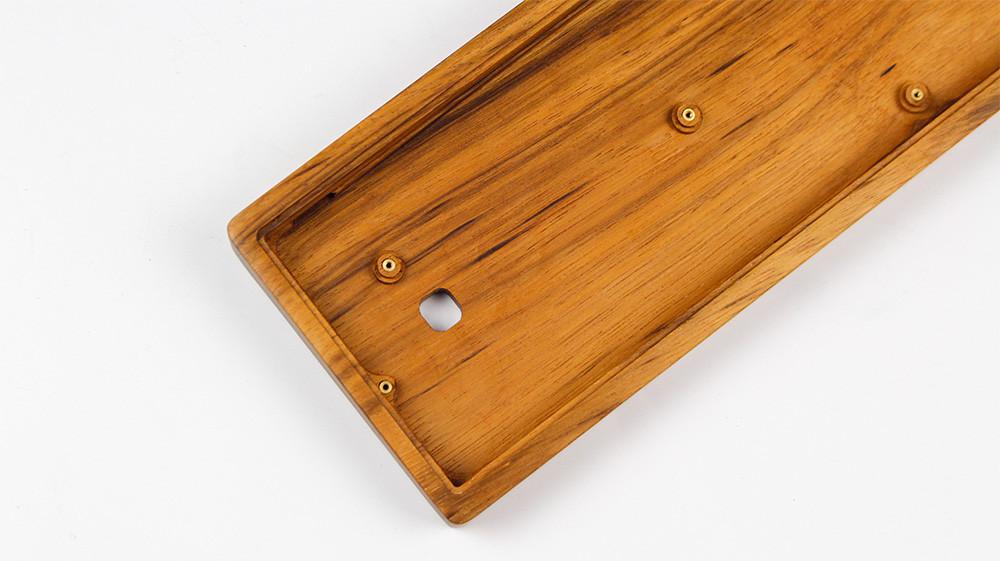
Plastic cases offer the best bang for the buck. The added strength that aluminum provides might feel more premium but is seldom a requirement. Plastic cases are still plenty strong and less likely to show scratches. They are also dirt cheap and significantly reduce the overall cost of your keyboard. You are more limited in color choice with the majority of cases coming in black and sometimes white. You don't get many of the vibrant finishes that anodized aluminum cases offer.
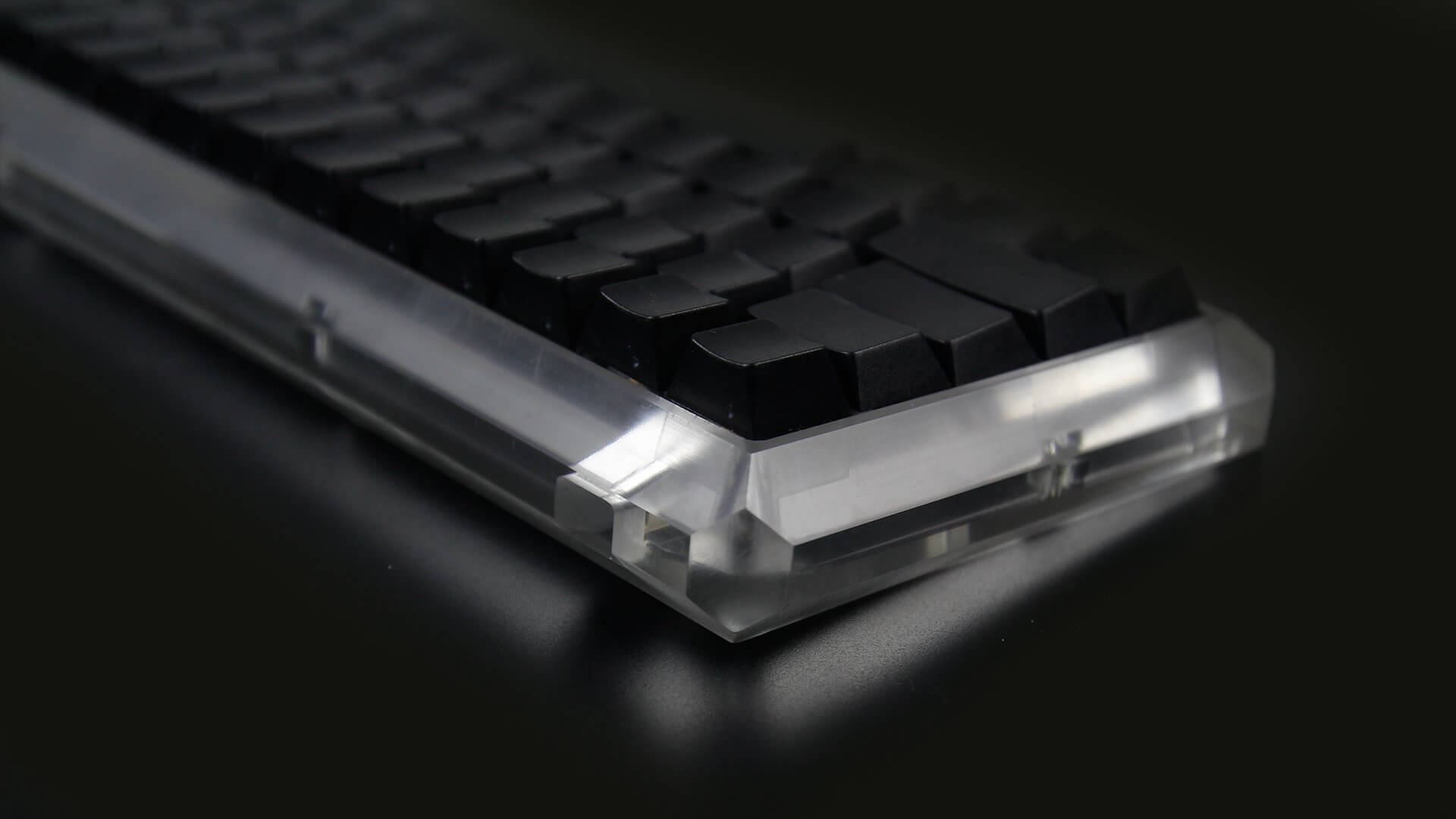
Wooden cases are by far the least common option but they can offer a beautiful aesthetic with the combination of nature and technology. They typically sit within the same price bracket as aluminum cases and share the weight advantage that a heavy aluminum case can provide. While the wood itself is quite durable, the finish can show signs of wear much faster than aluminum or plastic.
The last option that's become quite popular is the clear acrylic case. These cases provide all the advantages of a plastic case plus they allow light to shine through which creates a really neat effect if your PCB provides RGB lighting.
PCB
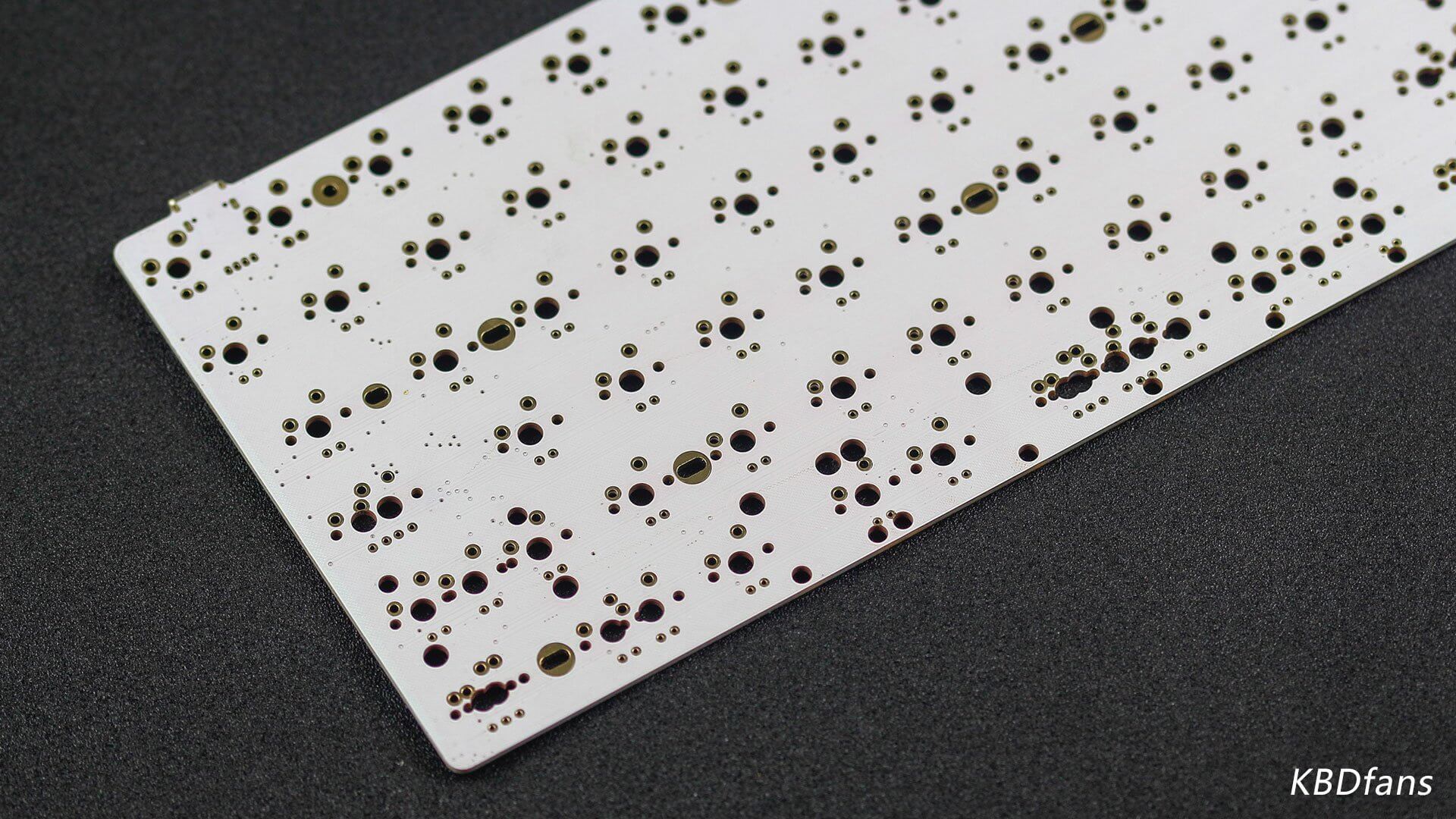
The PCB is the heart of your keyboard. It allows your inputs to be sent to your computer and controls which switches perform which functions. Choosing the correct PCB might seem like a daunting task but it provides some of the most interesting customization options for your keyboard.
While you have already determined the size of your keyboard, your PCB choice offers many options for the layout. If you have a 60 percent case for example, you may decide that you still need dedicated arrow keys. Many PCBs allow you to change the layout of your switches in a way that allows for this.
By reducing the size of some keys and offsetting their positions, you can make room for the extra keys. This is definitely not limited to adding arrow keys but it is one of the most common non-standard layouts offered in the 60 percent format. The only downside to utilizing a non-standard layout is the increased difficulty in finding appropriate keycaps, but we'll get to that later.
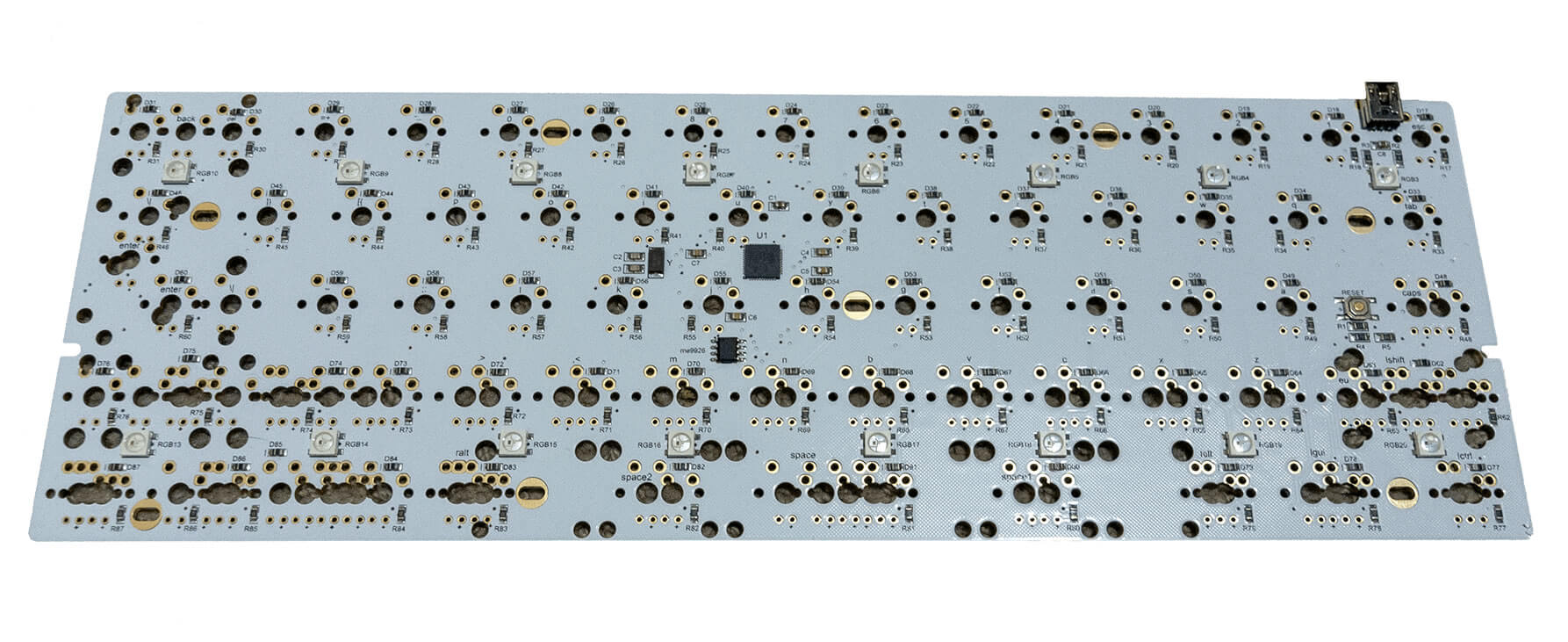
Most off the shelf keyboards don't offer the ability to reprogram each key's function and with the ones that do, your remaining components are limited to whatever choices the manufacturer has made for you. Most available PCB choices allow you to change the function of each key and usually offer a few different layers to program. Depending on the model, this is either done with external software and then flashed onto the board's firmware, or it is done directly on the keyboard through specific key combinations.
The majority of PCBs also include RGB lighting options, or at the very least, the option to solder in switch mounted backlights. If you choose a board with pre-soldered RGB LEDs this will achieve a nice underglow effect that can be accentuated with a clear or frosted acrylic case. This is another example of how one component can help in the selection of another.
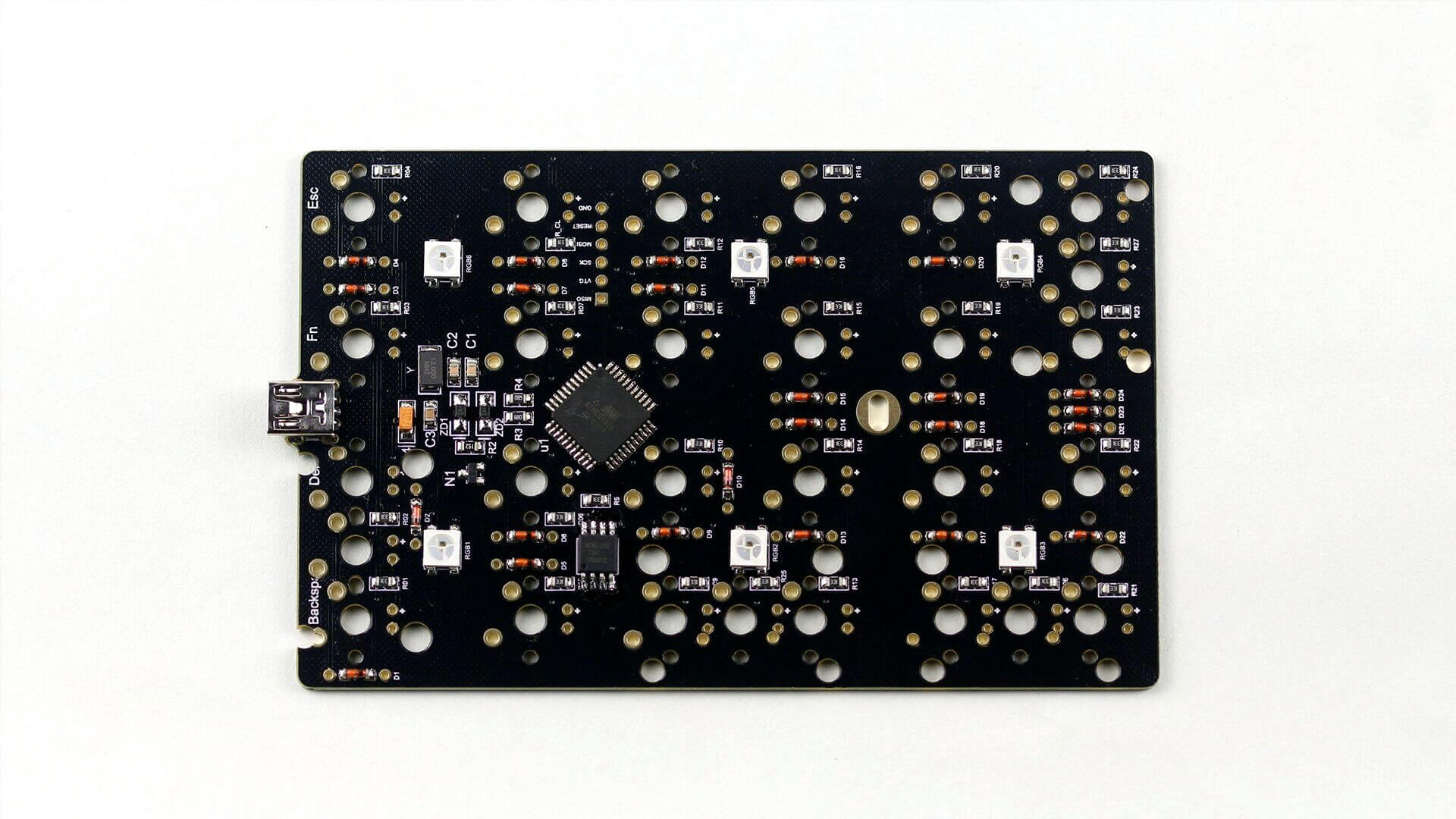
The final consideration when selecting your PCB is whether or not you know how to solder, and if not, if you are willing to learn. There are a few PCBs that support hot swappable switches. This means you will never have to touch a soldering iron to assemble your keyboard and it gives you the ability to change your switches on a whim. There are a few downsides when going this route. Your PCB options become quite limited as most boards on the market are designed with soldering in mind. It is also possible for the sockets to become damaged or pull out of the PCB when removing switches. This isn't very likely but it's something to keep in mind. Soldering is also a very valuable skill; building a keyboard is the perfect project to learn with.
Switches
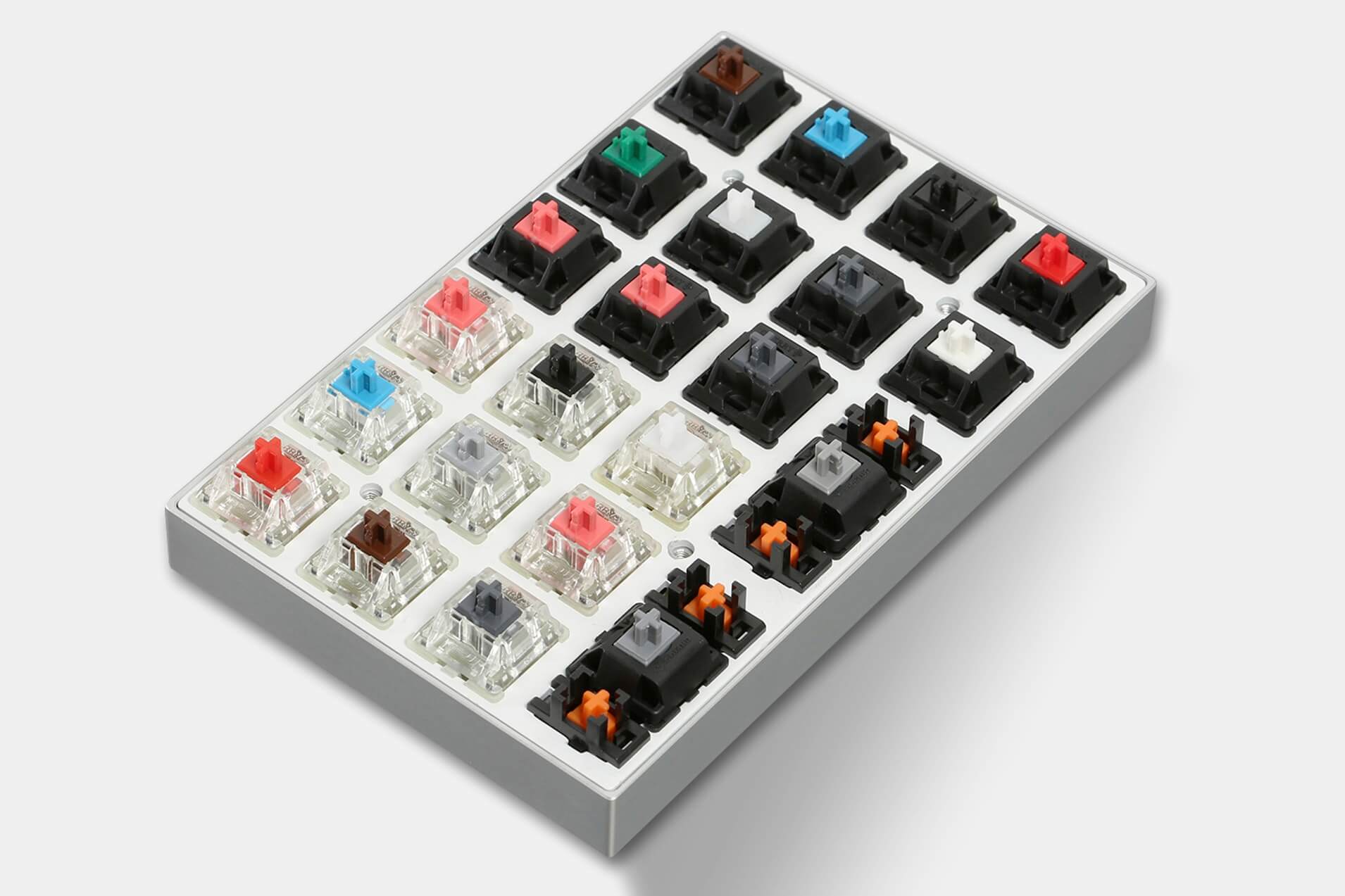
All mechanical keyboards require switches and all mechanical switches perform the same basic task---each type of switch just does it a little bit differently.
Every switch, whether it's from Cherry, Gateron, or Khail, is color coded to indicate these differences. The differences between the way two different switches feel when pressed are determined by the actuation point, release point, spring weight and whether or not the switch is linear or tactile. These four attributes make for a wide range of different feeling switches. Some are more tuned for specific tasks such as typing or gaming but ultimately the choice is entirely subjective. Most pre-built keyboards are available with a limited variety of switch options but none are available with all of them. When you are building your own keyboard, your switch choice is entirely independent from any of the other components you choose to go with. Because switch choice is such a personal thing, you need to know how each switch feels to make the best decision for yourself.
Many companies sell switch testers that you can buy. These are usually a small box with a variety of different switches mounted. If you don't feel like spending money on something you may only use a handful of times, I recommend going to your local computer store and testing various demo boards and take note of the switch type and how they feel. I personally recommend brown switches, either Gateron or Cherry. They provide a tactile bump on actuation while still being tame enough not to interfere when gaming and quiet enough not to annoy your neighbours. If you want to dive deeper into the differences between switches be sure to check out this guide.
Mounting Plate
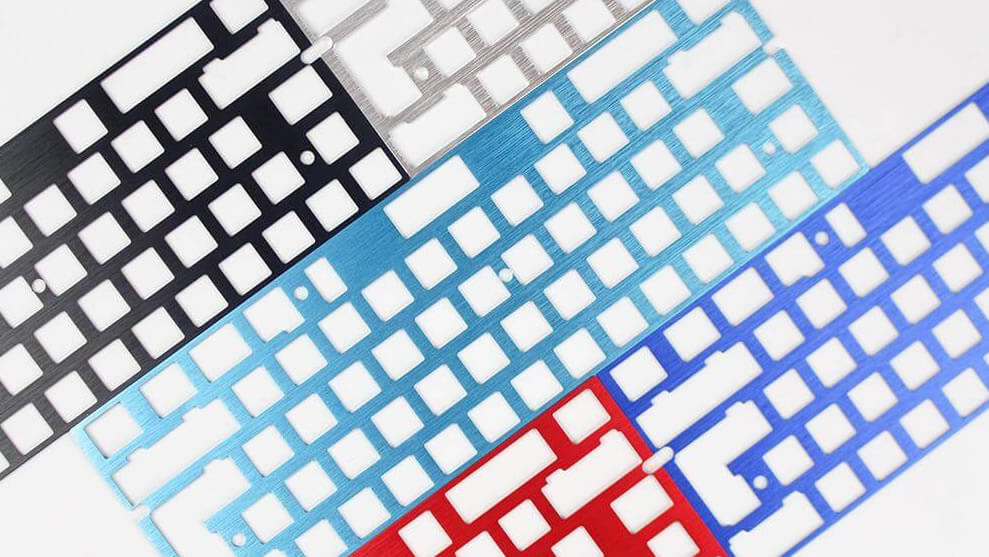
The mounting plate is one of the last components you should select as it is dependant on your case and PCB choices. The plate protects the PCB and acts as a guide to hold switches in place when soldering them to the PCB. It also makes the final product look nicer and comes in a variety of materials and finishes to add another personal touch to your build. They all perform the same function and the only real consideration when selecting your plate is to make sure that the cutouts allow you to use your desired layouts and fit with your PCB and case.
Stabilizers
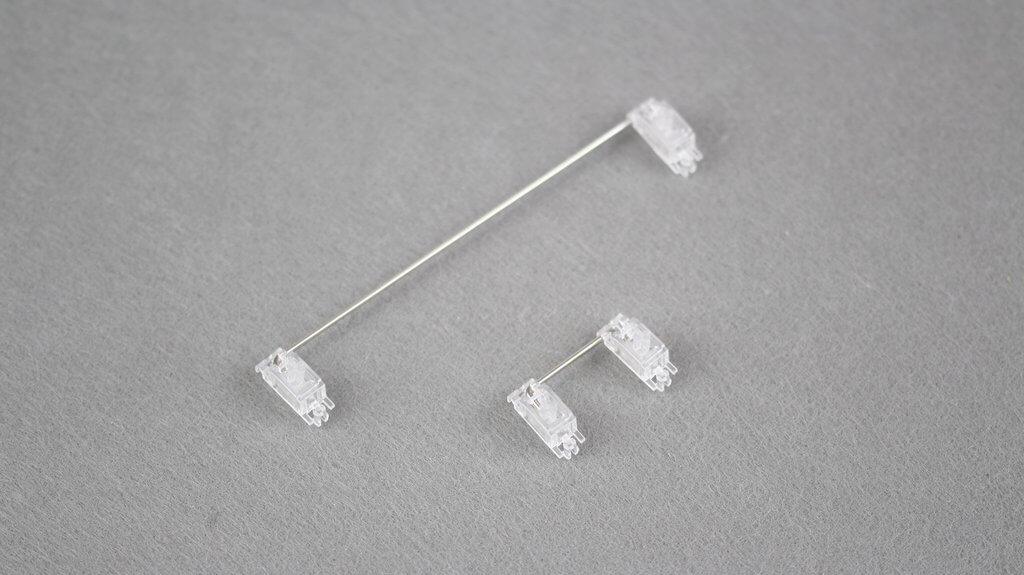
Stabilizers are an often overlooked component when building a keyboard. They aren't very exciting or customizable but you'll know right away when they are missing. They function exactly as their name implies, keeping certain keys like your shifts and space bar from wobbling around when you press them. They are typically sold as a standard set to work with most keyboard layouts. Brand isn't too important as long as you lubricate them before you install them, otherwise some of the cheaper options can get quite noisy.
Keycaps
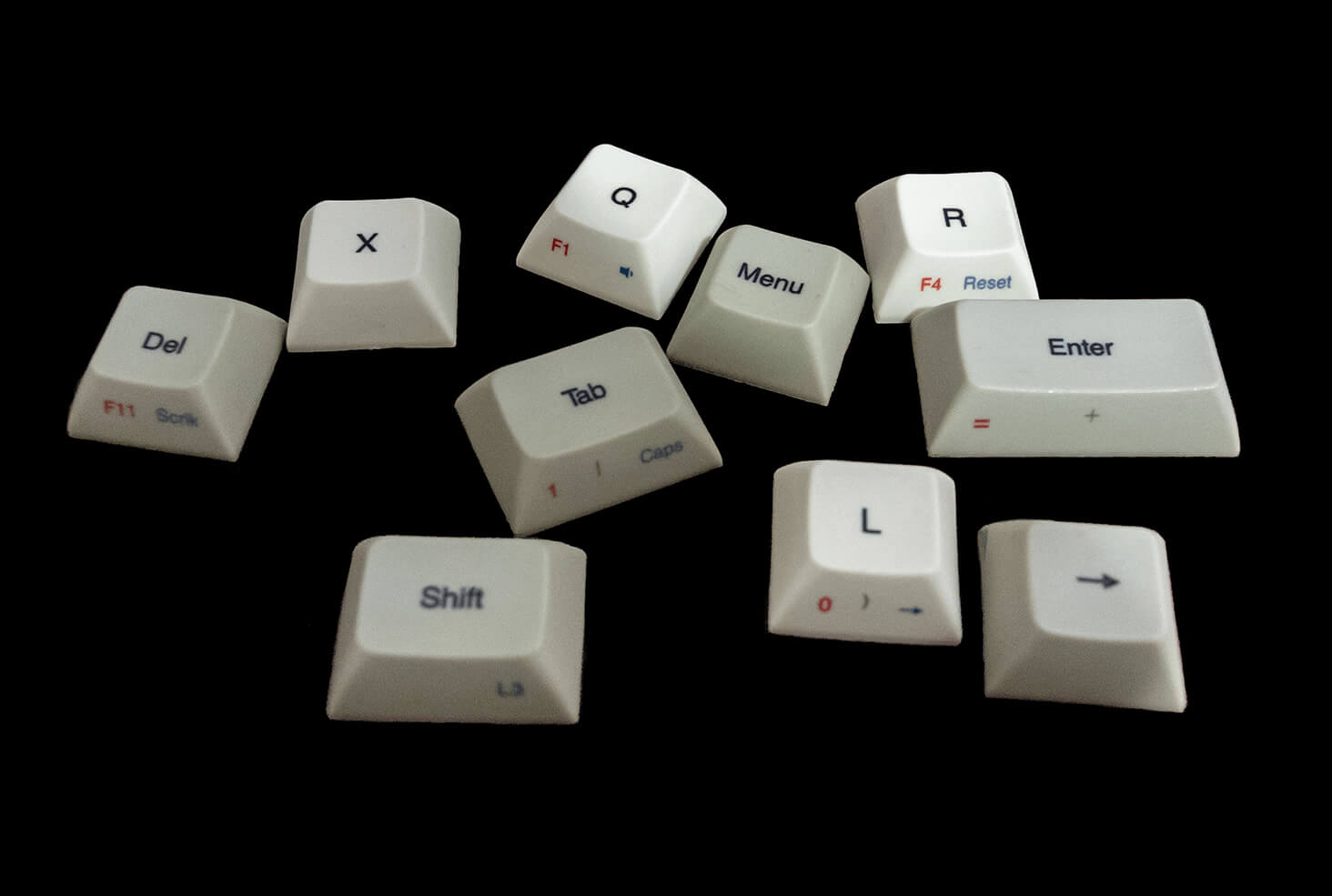
Whether it's pre-built or DIY, keycaps are the most obvious way to add a unique look to your keyboard; however, when it comes to selecting keycaps for DIY builds there are some extra things to consider. As long as you stick to a standard layout for the chosen size, finding keycaps with the appropriate legends is easy. Any standard keyset will work for your keyboard, with many brands even offering the same set with the exact number of keys you need for some of the smaller layouts to save you some cash.
If you've gone with a non-standard layout, you're options are greatly diminished. You will need to stick to sets that offer a high level of compatibility for non-standard layouts like those by GMK or those that allow you to purchase extra packs that cover the most common non-standard layouts like those found on Massdrop. The problem with either of these options is that they are significantly more expensive than standard keysets as they are usually produced in limited runs.

If you excel at touch typing, there is another much more cost effective method---blanks. Losing the requirement to have legends on your keys significantly opens up your options with non-standard layouts especially if you go with a non-sculpted key profile like DSA. This allows you to use caps from anywhere in the standard layout to fill in your non-standard setup, provided they are of the same size.
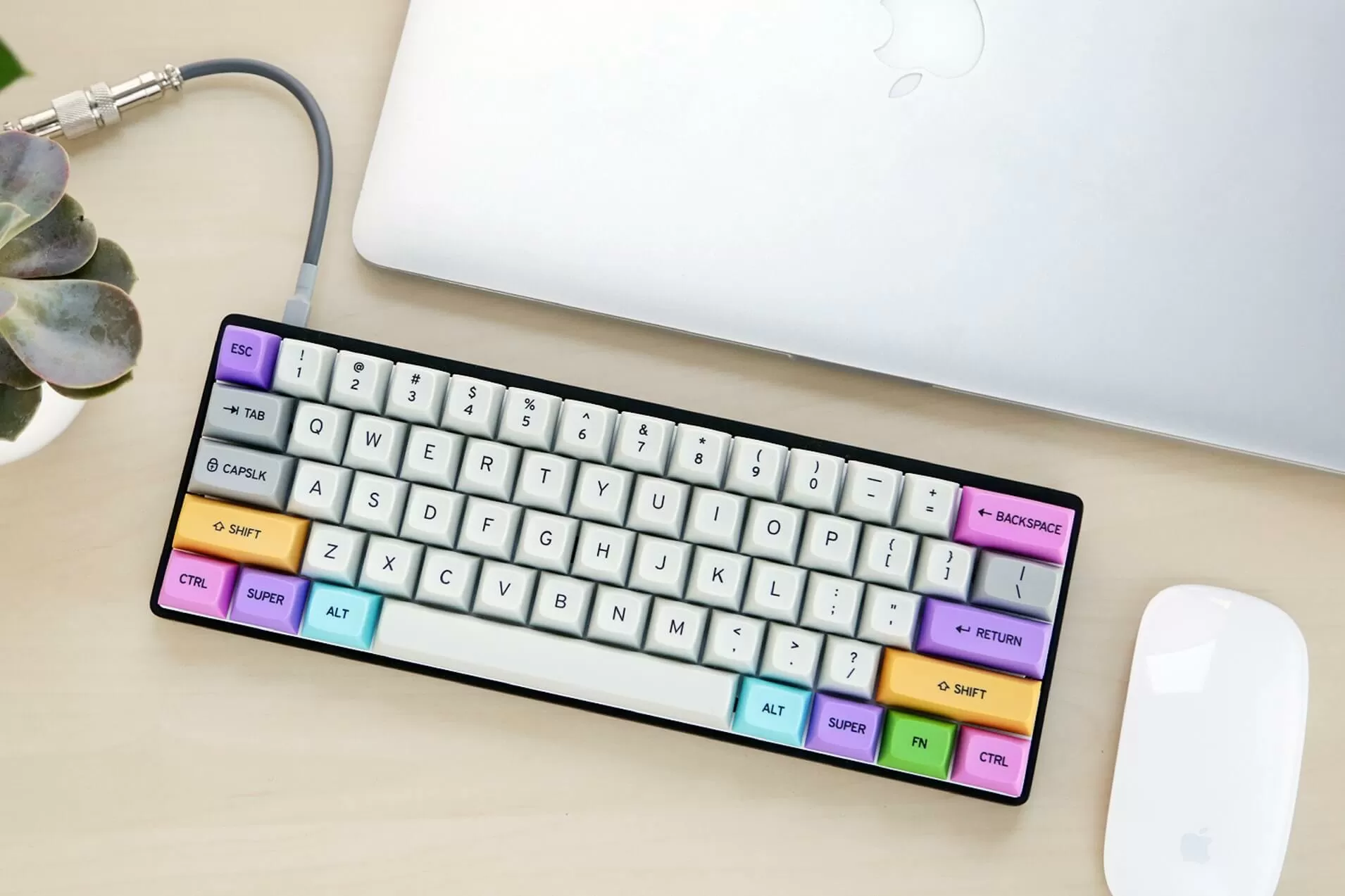
As with any project, there are a few tools required to get the job done right. For the most part you don't need to spend a ton of money, especially if you are only going to use them for one or two projects. With that said, the old adage, "You get what you pay for" holds true here.
No specialty stores are required here, Amazon has everything you need, but you do need to buy the right tools for the job and there are certain features that you may want to pay extra for.
Without further ado, these are the tools you'll need to complete your first keyboard:
Soldering Iron
As long as it's not battery powered, any basic soldering iron will get the job done; however, it's worth paying extra for model with variable speed and a stand. It's generally preferable not to burn holes in household objects when you need a spare hand.
Solder Sucker
Mistakes will be made and without one of these, you'll have no way to remove old solder before fixing them. This is a very basic tool and any model will do.
Solder
Your choice of solder can make this project relatively easy or extremely frustrating. While lead-free solder is less hazardous than leaded solder it also has a higher melting point which makes it much more difficult to obtain a proper bond. It's also important to select the right size for the job. For soldering switches, 63/37 rosin core solder comes highly recommended. Make sure to choose the correct size, usually anywhere between .03 and .06 will work here.
Filtration System
Solder smoke is hazardous, especially if you're using leaded solder. Be sure to pick up a solder fume extractor. They can be had for under $100 and will keep you safe.
I know that's a lot of information to take in, but there are many things to consider when choosing your components. The good news? Selecting your parts and tools is the most time consuming aspect of this project---assembly is the easy part, which we cover in Part 2, follow the link below.
TechSpot Series:
Build Your Own Mechanical Keyboard Project
While the big gaming brands have pushed the awareness and adoption of mechanical keyboards into the mainstream, what if I told you that every part of a keyboard can be customized? If you're not one for making compromises, it may be time to build your own.
- Part 1: Getting Started, Choosing the Parts
- Part 2: Assembly, Putting it All Together
